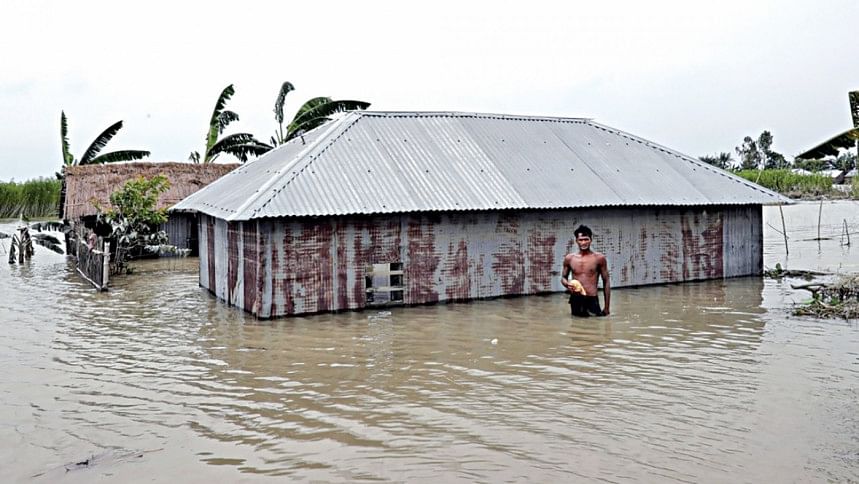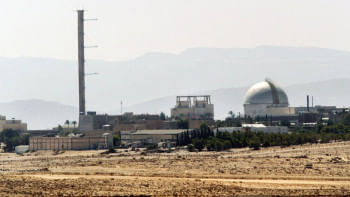Rich countries must pay for climate loss and damage

The global negotiations on how to tackle climate change take place in December at the annual Conference of Parties (COP) of the United Nations Framework Convention on Climate Change (UNFCCC), which is hosted in a different continent each year. This year it was the turn of South America, and COP25 was supposed to have been held in Santiago, Chile from December 2 to 13. However, due to the ongoing political unrest in Santiago, the government of Chile asked Spain to host it in Madrid.
The annual COP is held over two weeks (with some pre-COP meetings added to make it almost three weeks long), with the first week for officials from different countries who review progress of the actions agreed upon in previous COPs and negotiate what needs to be done next. Then in the second week, the ministers arrive for the final high-level round of political talks which involves intense negotiations amongst the different groups involved.
Except for the United States of America, no country negotiates by itself, but rather all join in sub-groups under the two biggest groups—namely, the rich countries (officially known as the Annex 1 countries as they are listed in Annex 1 of the UNFCCC) and the poorer countries, who call themselves the "Group of 77 and China" (sometimes also called the "Non-Annex 1 countries") which are actually 136 developing countries now.
Bangladesh is a member of one of the sub-groups under the G77 called the Least Developed Countries (LDC) Group, which consists of 47 of the poorest developing countries in Africa and Asia and is currently chaired by Bhutan.
Together, with the Alliance of Small Island States (AOSIS) and Africa Group and Latin America, these are four of the sub-groups under G77 which are considered the most vulnerable countries.
These four sub-groups of vulnerable countries together number over 100 countries which makes them a majority of the 195 countries in the UNFCCC and a super-majority (over two-thirds) in the G77. However, being small countries, their voices are seldom given much attention even within G77 where the bigger developing countries such as China, India, Brazil and South Africa dominate, let alone against the rich Annex 1 countries.
Nevertheless, whenever these four sub-groups of vulnerable countries are able to unite with a common demand, they can actually get the G77 to support them and then argue with the Annex 1 countries in turn.
This was how the 1.5 Degrees Long Term Temperature Goal was achieved in the historic Paris Agreement which came out of COP21 in 2015, held in Paris, France. This also happened two years earlier, at COP19 in Warsaw, Poland where the four sub-groups were able to force an agreement on setting up the Warsaw International Mechanism (WIM) on Loss and Damage against strong resistance from the Annex 1 countries.
The WIM set up an Executive Committee with a five-year workplan which will come up for review at COP25 and will require a decision on whether to give the WIM a new mandate or not.
The LDC Group has been coordinating with the other three vulnerable sub-groups and we intend to come up with a united strategy going into COP25, where we will argue—and do an advocacy campaign in the media and public domain—for not just giving the WIM a new mandate but also including a mandate to explore raising funding for "loss and damage" that is separate from adaptation funding and also providing compensation to the victims of human-induced climate change.
My colleagues at the International Centre for Climate Change and Development (ICCCAD) and I have been advising the LDC Chair and Group on the topic of loss and damage since COP19, and we will be facilitating a one-day pre-COP workshop bringing together the "loss and damage" negotiators from the four sub-groups to develop a common agenda going into COP25.
At issue here is the state of play on this topic which we anticipate will be strongly opposed by the Annex 1 countries, for whom "compensation" has been a taboo word and who only want to talk about insurance as the sole financial mechanism that can be used for loss and damage. While we have no objection to deploying insurance where the companies and countries can pay the premium, we feel that it does not work for poor countries and communities for whom other financial mechanisms will need to be explored.
Of course, there will also be other issues that will be discussed and negotiated at COP25, including the issue of fulfilling the pledge from the rich countries to provide USD 100 billion a year from 2020 onwards to the developing countries to tackle climate change, through both mitigation and adaptation. It does not seem that this promise will be fulfilled by next year but how much it will fall short will be the issue.
The other perennial topic of discussion is the role of the US government whose president has officially written to the UNFCCC withdrawing the US from the Paris Agreement (although not from the UNFCCC). The interesting feature of this is that the US will not be officially out of the Paris Agreement for another year as there is a delay of a year after a country officially declares its intention to withdraw. Hence, the US will still be part of COP25.
Finally, an even more interesting fact is that the date of the US withdrawal is November 7, 2020 which is the date of the presidential elections in the US. Every Democratic candidate running for president in the US has already declared that the first thing he/she will do, if elected, is to withdraw the US's letter of withdrawal from the Paris Agreement! So, if a Democrat wins the election, the US may be back in the Paris Agreement again and be able to take part in COP26, which will be held in Glasgow, Scotland and hosted by the government of the United Kingdom.
Saleemul Huq is Director of the International Centre for Climate Change and Development (ICCCAD) at the Independent University, Bangladesh.

 For all latest news, follow The Daily Star's Google News channel.
For all latest news, follow The Daily Star's Google News channel. 



Comments